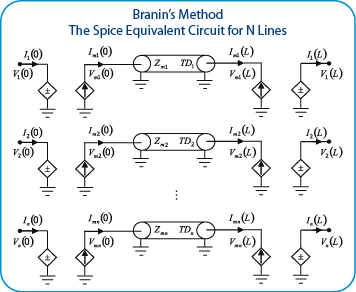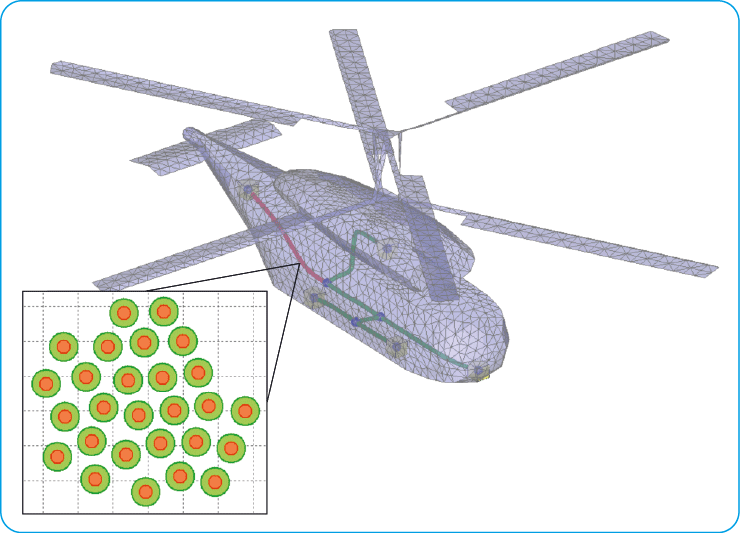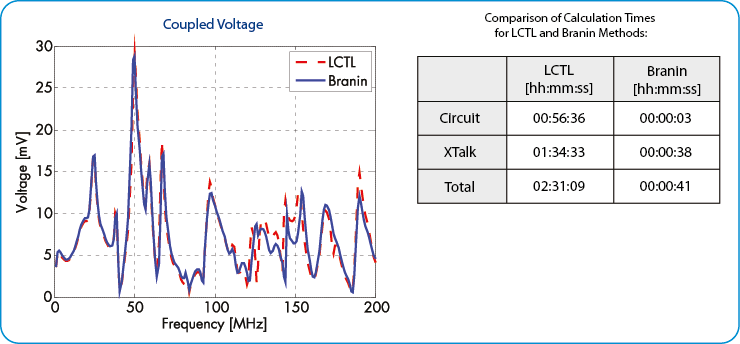Cross Talk between Cables in Helicopter Calculated by Branin’s Fast Method
Introduction
Investigation of cross-talk between cables plays important role in EMC (Electromagnetic Compatibility) analysis. EMC Studio provides effective computational techniques based on Lumped Circuit Transmission Line (LCTL) method for simulation of complex cable structures represented as Multi-Transmission Lines (MTL).
In the general case, non-uniform multi-conductor line can be modeled as assembly of segments. Each segment is approximated by uniform transmission line characterized by R, L, C and G parameters. After MTL parameters calculation for all segments circuit model for network analysis is generated. For cases when cable harness could be divided by long uniform lossless transmission line segments, Branin’s fast method could be applied.
Main idea of Branin’s method is to reduce multi transmission line to many uncoupled transmission lines. Obtained voltage and current distributions along each TL are connected with values at system outputs by special matrices, which represent coupling between lines. Using Branin’s method MTL is represented by means of SPICE elements, which model uncoupled transmission lines and special polynomial controlled current and voltage sources. Modeling of MTL as uncoupled transmission lines allows to reduce number of elements for network analysis and increase calculation speed.

Simulation Model Description
Helicopter model with harness containing 30 cables is considered.

Results
Voltage coupled to the one of the passive cables calculated by LCTL and Branin methods is shown below:

From the obtained results it can be seen that Branin method is in good agreement with basic LCTL approach in frequency range from 1 MHz to 130 MHz. For higher frequencies, difference between two methods can be explained by non-uniformities of lines. Calculation time of Branin’s method is many times less than one of lumped circuit transmission line method.
Conclusions
Special Branin’s method implemented in Hybrid solvers for fast calculation of lossless and quasi-uniform transmission lines gives advantage in calculation times in comparison with basic lumped circuit transmission line ( LCTL) approach.

